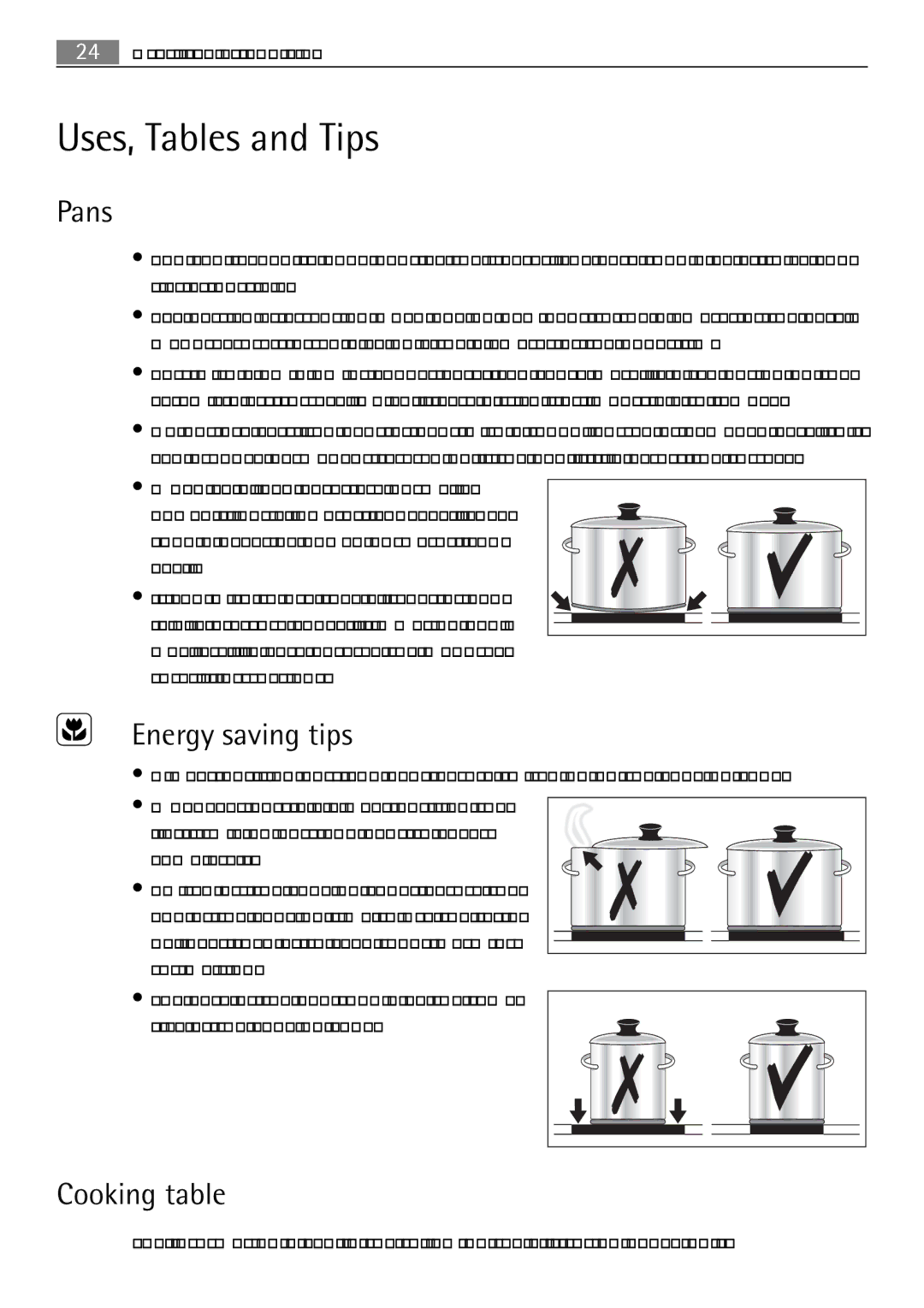
24Uses, Tables and Tips
Uses, Tables and Tips
Pans
•You can recognise good pans by their bases. The base should be as thick and flat as possible.
•Pay particular attention when buying new pans to the diameter of the base. Manufacturers often give only the diameter of the upper rim.
•Pots with aluminium or copper bases can cause metallic discolouring on the ceramic glass surface, which is very difficult or impossible to remove.
•Do not use cast iron pans or pans with a rough, burred or damaged base. This can produce permanent scratching if the pan is slid across the surface.
•When cold, pan bases are normally
bowed slightly inwards (concave). They should never be bowed outwards (con vex).
• If you wish to use special types of pan (e.g. a pressure cooker, simmering pan, wok, etc.), please observe the manufac turer's instructions.
2Energy saving tips
•Always position pots and pans before switching on the cooking zone.
•Whenever possible always position the
lids firmly on pots and pans to cover completely.
•Switch off the cooking zones before the
end of the cooking time to use the resid ual heat such as to keep foods warm or for melting.
•The base of the pan should be the same
size as the cooking zone.
Cooking table
The information given in the following table is for guidance only.
